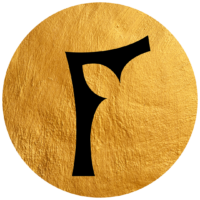Dijon’s hidden jewel

📍 🇫🇷 Dijon’s hidden jewel
You need to walk for miles out of the monument-laden city-center to get to Dijon’s true jewel. A jewel hidden by hospital buildings and never-ending walls without doors. It is called the “Well of Moses”.
It is an hexagonal base sculpted between 1396 and 1405 for the Duke of Burgundy. It was at the very moment when France was going through an intense phase of the Hundred Years' War against the English. And it was a Dutchman, Claus Sluter, who carried out the commission. It is impossible to imagine French historian Henri Focillon being more complimentary than in front of this monument: "the most remarkable example of the harmony between theater and figurative art, and of a drama in which the prophets of the Old Testament, the masters of the ancient law, become the caryatids [the supporting pillars] of the crucified Christ".
For one must imagine above these six figures a sculpture of the Passion of Christ which has unfortunately disappeared. Note also the power of Moses’ face, Judaism’s prophet: "timeless, transfigured, his head tilted backwards, his eyes strongly inscribed under the superciliary arches, with a long two-pointed beard over a robust body... all designed in a manner reminiscent of a spiritual dynasty carried forward by Michelangelo and Rodin later on." (Focillon). As if placed on Mose’s left shoulder, one can read on an unfolded scroll an obedient (and perhaps guilty?) tribute of the Old Testament fathers to the New: "In the evening, the multitude of the sons of Israel will sacrifice the Lamb..."
____ Sources ____
>> Henri Focillon, "The Art of the West in the Middle Ages", 1938
